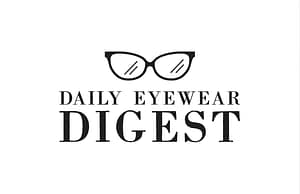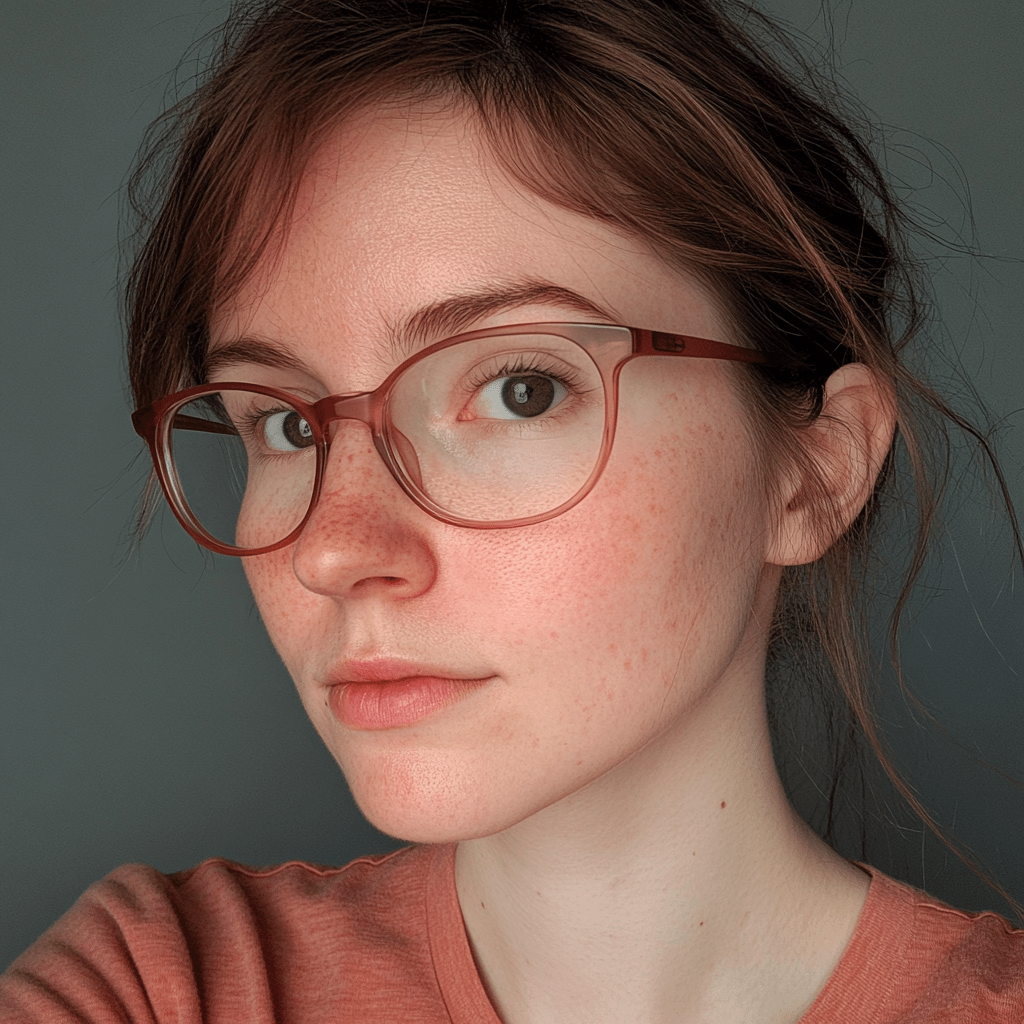Aging is a fact of life, and our vision isn’t exempt. If you’re like most people, you may have noticed that reading small print or distinguishing colors isn’t as easy as it used to be. That doesn’t mean you’re doomed to poor eyesight, but understanding why these changes happen can help you make smart choices. In this article we’ll explore how your eyes age, what glasses can and can’t fix, and ways to protect your vision for the long haul.
The Natural Aging Process of Your Eyes
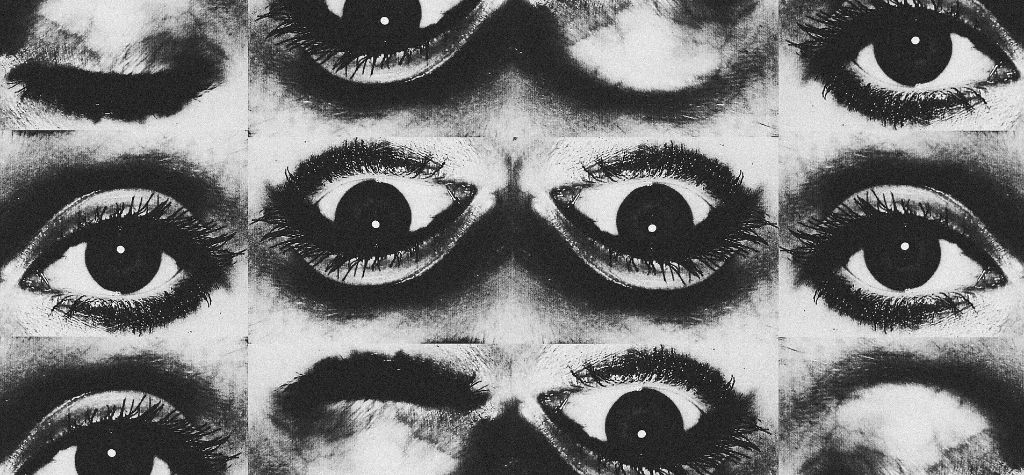
As you grow older, you might notice several normal changes in how your eyes work. These shifts aren’t necessarily a sign of disease; they are part of the natural aging process. According to the National Institute on Aging (NIA), common age‑related changes include losing the ability to focus on nearby objects (presbyopia), needing more time to adjust between light and dark environments, and having trouble distinguishing colors. Let’s break down these common changes.
Presbyopia: Why Reading Gets Harder
Presbyopia occurs when the lens inside your eye becomes less flexible, making it difficult to focus on close objects. This condition typically starts around age 40 and progresses slowly over time. The NIA notes that losing the ability to see up close is a normal part of aging, and most people need reading glasses, bifocals or progressive lenses to compensate. Corrective lenses can help by shifting the focal point so near objects become sharp again, but they don’t reverse the underlying stiffening of the lens. This means you’ll likely need stronger prescriptions over time.
Reduced Adaptation to Light
Do you struggle to see when entering a dark room after being outside, or does bright sunlight make you squint longer? Aging affects the eye’s pupil and the muscles that control it. As we age, the pupils react more slowly to changes in light. This makes it harder to adapt to bright or dim conditions. The NIA reports that it’s normal for older adults to need more time to adjust when going from a bright environment to a darker one. Wearing sunglasses and ensuring proper indoor lighting can help reduce glare and strain.
Changes in Color Perception
Color perception can also change. The clear lens of a young eye allows light of all colors to pass through easily. Over decades the lens can yellow slightly, making some colors (especially blues and greens) appear muted. According to the NIA, older adults may have trouble distinguishing between similar colors. These changes don’t necessarily threaten vision but can affect daily tasks like selecting matching clothes or reading color-coded information. Using bright, contrasting colors in your environment may help.
Dryness and Tear Production
Many people experience dry eyes as they age. Tear production can decrease, and the composition of tears may change. Environmental factors such as air conditioning or dry climates can worsen dryness. Artificial tears or medications can provide relief. Staying hydrated and blinking frequently when using screens also helps.
More Time Needed for Near‑Vision Tasks
Even without presbyopia, some near‑vision tasks require more effort as you age. Reading small print or threading a needle may require more lighting and patience. Combining adequate light with appropriate reading glasses usually solves these issues.
Age‑Related Eye Diseases: Beyond Normal Aging
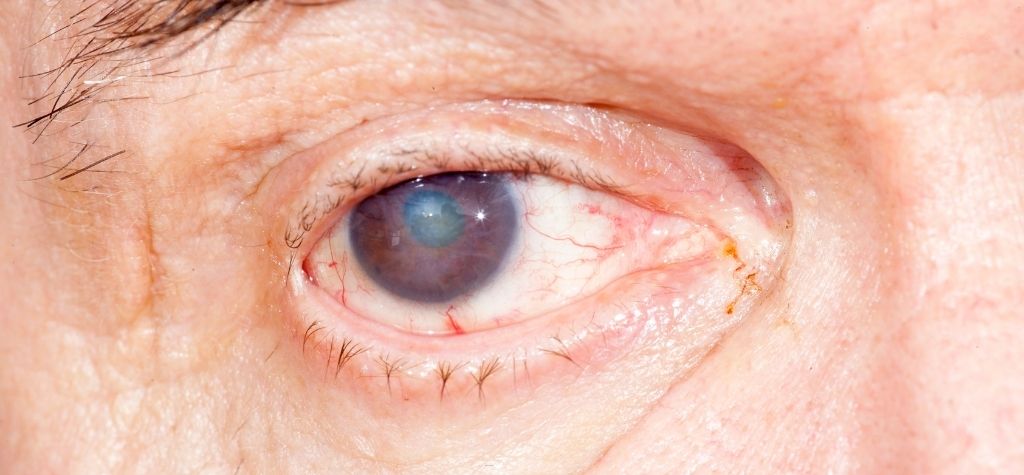
While presbyopia and reduced light adaptation are normal, certain eye diseases become more common with age. These conditions can lead to permanent vision loss if not detected early. Regular eye exams are crucial because many serious eye diseases develop gradually without obvious symptoms.
Cataracts
Cataracts occur when the clear lens of the eye becomes cloudy. Over time, proteins in the lens clump together, causing vision to become blurry, hazy or less colorful. Cataracts are one of the leading causes of vision impairment worldwide. They can make driving at night difficult and increase sensitivity to glare. The only effective treatment for advanced cataracts is surgical removal of the cloudy lens, which is replaced by an artificial intraocular lens. Glasses alone cannot cure cataracts, although a changing prescription may help early on. Left untreated, cataracts can lead to significant visual impairment.
Age‑Related Macular Degeneration (AMD)
AMD is a degenerative condition affecting the macula, the part of the retina responsible for sharp central vision. It is the leading cause of vision loss in people over 50. The disease progresses in two forms: dry (more common and slower‑developing) and wet (less common but more rapid and severe). Symptoms include difficulty reading, recognizing faces and seeing fine details. According to the National Eye Institute (NEI), AMD is a major cause of low vision — a loss of eyesight that cannot be corrected with glasses, contact lenses, medication or surgery. While glasses may help with magnification, they cannot restore central vision once it is lost to AMD. However, early detection and treatments such as anti‑VEGF injections for wet AMD can slow progression and preserve remaining vision.
Glaucoma
Glaucoma is a group of diseases that damage the optic nerve, often due to high intraocular pressure. It is sometimes called the “silent thief of sight” because early stages usually have no symptoms. Without treatment, glaucoma can lead to peripheral vision loss and eventual blindness. The NEI notes that glaucoma is a common cause of low vision. While prescription eye drops, laser treatments and surgery can help control intraocular pressure, glasses alone cannot prevent optic nerve damage. Regular eye exams that include pressure checks and optic nerve evaluations are vital for early detection.
Diabetic Retinopathy
People with diabetes are at risk of diabetic retinopathy, a condition where high blood sugar damages blood vessels in the retina. In its early stages, there may be no noticeable symptoms. Over time, blood vessels can leak or grow abnormally, leading to vision distortion, floaters, and eventually vision loss. The NEI lists diabetic eye disease as a leading cause of low vision. Controlling blood sugar and regular eye examinations are the best ways to prevent or delay its progression. Glasses cannot repair the damaged retinal tissue caused by diabetic retinopathy.
Other Conditions: Retinitis Pigmentosa and Optic Nerve Damage
Retinitis pigmentosa is a group of inherited disorders that cause gradual degeneration of the retina, leading to night blindness and loss of peripheral vision. Optic nerve damage from trauma, inflammation or disease can also lead to permanent vision loss. Specialized low‑vision devices may assist with daily tasks, but glasses cannot restore lost retinal or optic nerve function.
What Glasses Can Fix
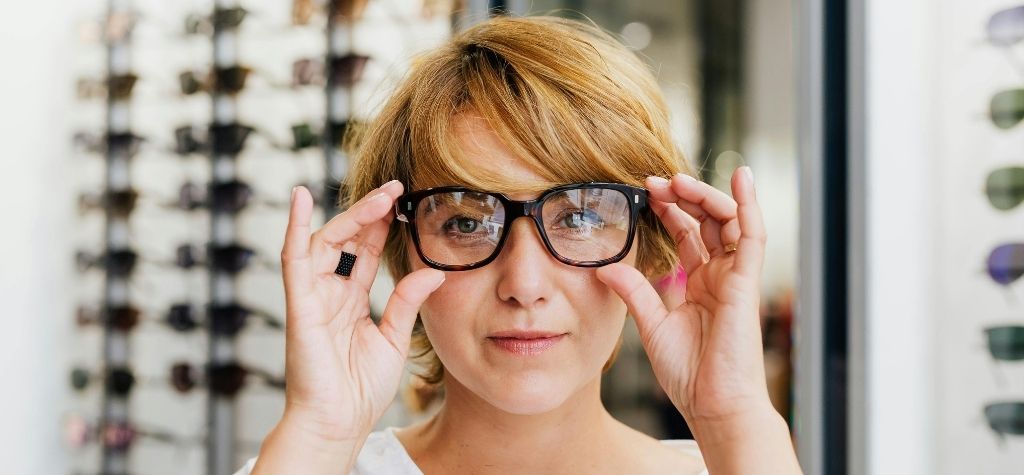
Glasses are powerful tools for improving vision, but their capabilities have limits. Understanding what they can fix helps set realistic expectations.
Correcting Refractive Errors
The primary purpose of eyeglasses is to correct refractive errors — problems with how the eye focuses light on the retina. Common refractive errors include:
- Myopia (nearsightedness): Distant objects appear blurry because the eye focuses images in front of the retina.
- Hyperopia (farsightedness): Nearby objects appear blurry because images focus behind the retina.
- Astigmatism: The cornea or lens is irregularly shaped, causing distorted vision at all distances.
- Presbyopia: Age‑related inability to focus on near objects due to loss of lens elasticity.
Prescription lenses adjust the direction of light entering the eye so that images focus correctly on the retina. For presbyopia, reading glasses, bifocals, trifocals and progressive lenses provide different strengths in one lens to help you see clearly at multiple distances.
Providing Magnification
Even when glasses cannot restore vision lost to diseases like AMD or glaucoma, magnification can make remaining vision more useful. High‑powered reading glasses or magnifying devices enlarge print and objects. For example, specialized prismatic glasses or magnifiers help some people with central vision loss to read or watch television. These devices don’t cure the underlying disease but improve quality of life.
Filtering Light and Reducing Glare
Lenses can protect eyes from ultraviolet (UV) rays and reduce glare. Sunglasses with UV protection lower the risk of cataracts and other UV‑related damage. Photochromic lenses darken in bright sunlight and lighten indoors, offering comfort and protection. Tinted lenses and anti‑glare coatings help reduce eye strain and improve contrast, especially for people with cataracts or light sensitivity.
Assistive Devices Beyond Standard Glasses
Standard prescription glasses aren’t the only options. People with low vision can use specialized devices such as bioptic telescope glasses, E‑Scoop glasses (which combine magnification, contrast enhancement and improved light transmission), prismatic reading glasses and side‑vision awareness glasses. These devices can help individuals maintain independence by enhancing remaining vision for specific tasks. However, they require training and often cost more than regular glasses.
What Glasses Can’t Fix
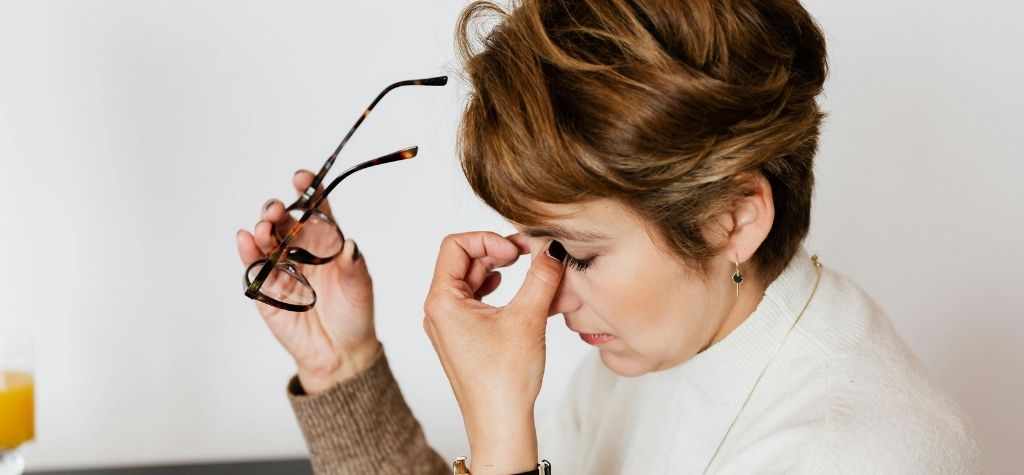
Despite the impressive benefits of corrective lenses, there are limits. Understanding these limits can help set expectations and encourage timely medical care.
Low Vision: When Standard Corrections Aren’t Enough
Low vision refers to significant vision impairment that cannot be fully corrected with standard glasses, contact lenses, medication or surgery. The NIA describes low vision as eyesight that cannot be fixed by eyeglasses, contact lenses, medication or surgery. The NEI explains that low vision makes everyday activities such as reading mail, cooking and recognizing faces difficult. Causes include age‑related macular degeneration, cataract, glaucoma and diabetic eye disease. Low vision affects millions of Americans, especially older adults. Traditional glasses cannot restore lost vision because the underlying damage occurs in the retina, optic nerve or brain. Instead, vision rehabilitation and specialized devices help maximize remaining sight.
Permanent Damage to Retinal or Optic Nerve Tissue
Once nerve cells in the retina or optic nerve are damaged, they cannot regenerate. Diseases like glaucoma and advanced diabetic retinopathy cause irreversible harm. Glasses can’t repair nerve damage. Early detection through regular eye exams is essential; treatment can slow progression but not reverse existing damage.
Age‑Related Changes in Lens Transparency
Cataracts cloud the eye’s natural lens, and glasses only compensate so far. While stronger prescriptions may help early on, the cloudiness worsens over time. Ultimately, surgery is the only solution to restore clear vision. No lens correction can remove cataracts.
Visual Field Loss
Diseases such as glaucoma and retinitis pigmentosa cause loss of peripheral vision. Glasses can improve central focus but cannot expand a narrowed field of view. Some people use reverse telescopes or prism lenses to shift images into a remaining usable field, but these devices have limitations.
Neurological Conditions
Certain neurological conditions, such as stroke or brain injury, can impair vision or visual processing. Glasses may correct optical focus but cannot heal brain lesions. Rehabilitation therapy may help patients adapt, but outcomes depend on the extent of brain damage.
Quote:
“Low vision means that even with regular glasses, contact lenses, medicine, or surgery, people find everyday tasks difficult to do,” notes the National Eye Institute.
Vision Rehabilitation and Other Solutions
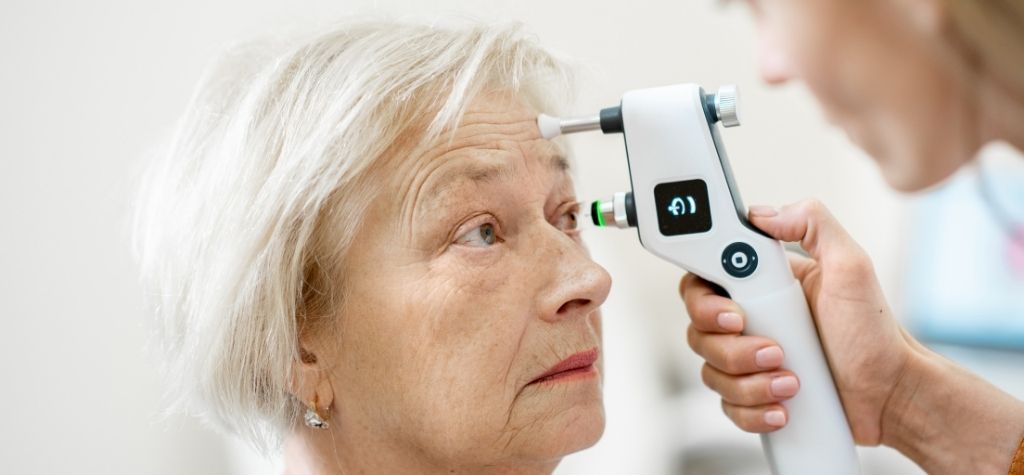
Because glasses can’t fix everything, many people benefit from vision rehabilitation services. The NEI emphasizes that millions of Americans live with vision impairments that cannot be corrected with glasses, contacts or standard treatments. Vision rehabilitation helps people adapt by teaching techniques and using devices tailored to their needs. Services may include:
- Low‑vision examination: An optometrist or ophthalmologist evaluates residual vision and recommends devices.
- Training in using magnification and adaptive tools: Learning to use magnifiers, large‑print materials, audio books and screen readers.
- Orientation and mobility training: Helping people navigate safely with or without a cane.
- Home modifications: Improving lighting, reducing glare and adding contrast to stairs and appliances.
Specialized low‑vision glasses (bioptic telescopes, E‑Scoop, prismatic readers) can provide additional magnification and field expansion. These devices require professional fitting and training.
Tips to Protect Aging Eyes and Delay Serious Problems
While aging is inevitable, you can take steps to protect your eyes and preserve vision.
Get Regular Comprehensive Eye Exams
Many serious eye diseases develop slowly without noticeable symptoms. The NIA recommends regular eye exams to detect early signs of disease. Adults over 60 should have comprehensive exams every year or two, and people with diabetes or a family history of eye disease may need exams more often. Eye professionals can check intraocular pressure, evaluate the retina and macula, and update prescriptions.
Manage Chronic Health Conditions
Chronic conditions like diabetes and hypertension increase the risk of eye diseases. Keeping blood sugar and blood pressure under control reduces the risk of diabetic retinopathy and hypertensive retinopathy. Working closely with your physician ensures that systemic diseases don’t harm your eyes.
Protect Eyes from UV Light
UV exposure contributes to cataract formation and may accelerate macular degeneration. Wear sunglasses that block 99–100% of UVA and UVB rays whenever you are outdoors. Wide‑brimmed hats provide additional protection.
Eat a Nutrient‑Rich Diet
Foods rich in antioxidants, vitamins A, C and E, and omega‑3 fatty acids support eye health. Dark leafy greens, brightly colored fruits and oily fish are excellent choices. Some studies suggest that supplements containing lutein and zeaxanthin may help slow the progression of macular degeneration, but always consult your doctor before taking new supplements.
Quit Smoking
Smoking increases the risk of cataracts, macular degeneration and other eye diseases. Quitting reduces those risks and benefits overall health.
Maintain Healthy Habits
- Exercise regularly: Physical activity improves circulation, which can benefit your eyes.
- Stay hydrated: Drinking enough water supports tear production and overall eye function.
- Take screen breaks: Follow the 20‑20‑20 rule: every 20 minutes, look 20 feet away for 20 seconds to reduce digital eye strain.
Use Proper Lighting and Ergonomics
Ensure your workspace and home are well lit. Use adjustable lamps for reading and tasks. Position computer screens to minimize glare and maintain comfortable distances.
Know Your Family History
Many eye conditions have genetic components. If relatives have glaucoma, macular degeneration or other eye diseases, inform your eye care provider. Early screening can help detect problems before they cause significant damage.
Conclusion: Embrace Knowledge and Seek Help Early
Your eyes will change as you age, but understanding how and why helps you prepare. Normal aging brings presbyopia, slower adaptation to light and subtle color changes. Glasses and contacts remain excellent tools for correcting refractive errors and enhancing vision, yet they have limits. Serious conditions like cataracts, macular degeneration, glaucoma and diabetic retinopathy cannot be solved with glasses alone. Low vision — vision loss that cannot be fixed with standard corrections — affects millions and requires specialized care.
The key takeaway? Don’t ignore vision changes or rely solely on new lenses. Schedule regular eye exams, adopt healthy habits, and consult professionals when problems arise. Vision rehabilitation and low‑vision devices can make a significant difference when glasses aren’t enough. By staying proactive and informed, you can preserve your precious sight and maintain a vibrant quality of life.
